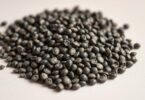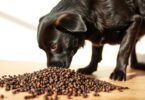Flavorful additives are becoming a common practice among pet parents as a way to increase hydration and meal excitement. Not everything in the pantry is safe, though, particularly when tails start to wag over something tasty like chicken broth. What can caregivers do to differentiate between healthy choices and lurking dangers?
According to the top pet nutritionists such as Portland Pet Food Company, plain broths without onions, garlic or excessive salt are beneficial. These are additives that can easily be concealed in store-bought ones, and it is necessary to pay attention to the label. Rogue Pet Science focuses on the fact that clean recipes are beneficial to digestion and hydration without affecting health.
This guide explores science-backed strategies to incorporate broth safely. Learn how to choose commercial products or make your own homemade using vet-approved ingredients. Discover serving suggestions, nutritional benefits, and innovative serving suggestions that suit canine pets.
Equip yourself with the information you trust to turn a basic kitchen essential into a wellness aid. Let’s ensure every slurp supports vitality—without unwanted surprises.
What is Chicken Broth and How Does it Fit into the Diet of a Dog?
Broth is a common starting point in adding flavor to a dog bowl, but there are more reasons than just taste. This juice is generally prepared by boiling bones, meat or vegetables in water. Homemade ones can be made with complete control over the ingredients and store-bought ones need to be checked carefully.
Veterinarians highlight broth’s versatility. It makes dry kibble more palatable to older animals, it attracts finicky eaters, and it rehydrates sick animals. The secret is not to use additives such as onion or too much salt which will be harmful to your companion.
Safe broth is made by boiling unseasoned chicken parts without spices. This technique retains nutrients such as collagen and minerals and removes risks. Joint-friendly blends are nutritious, and they enhance digestion and everyday meals.
High-quality broth also encourages hydration. Adding a splash to water bowls or making it into ice cubes makes attractive alternatives to the unwilling drinker. When adding new supplements, it is always advisable to consult your vet to make sure that it is in line with dietary requirements.
Can Dogs Have Chicken Broth? Safety Guidelines and Considerations
To improve the food of your furry friend, you have to make clever decisions, particularly when adding something new. Chicken broth may be a useful ingredient when used in a considerate way. Portland Pet Food Company emphasizes three non-negotiables: no onion, garlic, or too much salt, which are typical risks of human-grade products.
Smart Strategies for Selective Eaters
Adding a teaspoon of broth to kibble can be the thing that will get the attention of a picky eater. Start with minimal amounts to test tolerance. Veterinarians advise that diluted forms, one part broth to three parts water, be used on sensitive stomachs to avoid digestive upset.
Ingredient Vigilance Matters
Store-bought options demand label scrutiny. Look out for low-sodium labels and stay away from vague words such as natural flavors. Full control over ingredients is possible with homemade versions, made of boiled chicken breasts and carrots. Always strain bones to eliminate choking risks.
The size of the portion depends on the size: toy breeds receive tablespoons, and more substantial companions work with quarter-cup portions. Combine the use of balance broth with regular meals to achieve nutritional balance. Freeze leftovers in silicone molds for hydrating summer treats.
Identifying Ingredients: What’s Safe and What to Avoid
When choosing broth to feed pets, the detective eye is needed to read ingredient lists. Harmless-seeming additives often hide risks that compromise animal wellness. Prioritize simplicity—quality blends contain recognizable components without chemical jargon.
Steering Clear of Silent Threats
Onion and garlic powders are common ingredients in commercial broths, but they destroy red blood cells in animals. Even small amounts may cause weakness or breathing difficulties. Sodium is toxic to the kidneys, and artificial preservatives such as BHA cause allergies.
Safer options use carrots, celery, or parsley for flavor. Check the labels on the product to see that it is low-sodium certified-preferably less than 100mg per serving. Homemade versions eliminate guesswork when simmering unseasoned poultry.
Embracing Clean-Label Solutions
Organic certifications ensure ingredients meet strict pesticide-free standards. Broths that are non-GMO do not contain crops that are genetically modified and may cause problems to sensitive stomachs. Look for USDA labels or clear labels that mention farm of origin.
Pour any remaining broth into ice cube trays to freeze in portion-controlled treats. Rotate proteins like turkey or beef to diversify nutrients. This is a proactive strategy that makes the mealtime wellness support uncompromised.
Homemade vs. Commercial Chicken Broth for Dogs
Choosing between homemade and store-bought broth? Both options can enhance meals when selected wisely. Homemade products will allow you to take control of all the ingredients, whereas commercial products are convenient. The decision will be based on your priorities: tailor-made or time-saving solutions.
Benefits of Making Your Own Broth
Preparing broth at home ensures transparency. You choose fresh poultry, omit unnecessary salt, and do not use such harmful additives as onion powder. Unseasoned chicken bones or meat extracts are collagenous, which aids joint health and digestion as they are simmered.
Homemade batches are cost-effective. Leftover carcasses or vegetable scraps transform into nutrient-rich liquid. Store in ice cube trays to add conveniently and in portion-controlled amounts to kibble or water bowls.
What to Look for in Store-Bought Broth
Commercial options require label vigilance. Prioritize brands with “low-sodium” certifications—ideally under 100mg per serving. Do not use such terms as natural flavors that can conceal risky ingredients.
Established brands such as Portland Pet Food Company focus on clean recipes. Try to find USDA organic seals or non-GMO certification to make safer options. Never fail to check that it does not contain garlic, onion, and artificial preservatives.
Whether homemade or store-bought, quality broth elevates meals. Combine pair choices with veterinary advice to suit the individual needs of your companion.
Innovative Ideas of Adding Chicken Broth to Your Dogs Diet
The first step to turning mealtimes into a tail-wagging experience is easy, delicious improvements. Rogue Pet Science advises the inclusion of this liquid gold in everyday life to increase hydration and satisfaction. Be it rehydrating dry food or creating frozen treats, such measures are both picky eaters and health-conscious owners.
Enhancing Kibble and Moistening Meals
A dash of low sodium broth transforms boring kibble into a tasty aromatic treat. Add two tablespoons to dry food to make textures softer and aromas free. This is a miracle with older pets or pets that have had dental work.
Hydration boost during hot days is achieved by mixing broth with water. Stirring it into meals also helps mask medications. Always use room-temperature liquid to preserve nutrients.
Freezing Broth for Tasty Dog Treats
To have crunchy snacks in the summer, freeze broth in ice cube trays with diced carrots or green beans. These portion-controlled cubes melt slowly, keeping pets engaged. Silicone molds shaped like bones add playful flair.
Mash pumpkin and mix with thawed broth to make a lickable topper. Create mini “pupsicles” by layering broth with shredded chicken. Store extras in airtight containers not longer than three months.
These are the ways to keep the nutrition balanced and enjoy the joy of each slurp. Switch up the recipes so that your companion does not get bored and overloads his system.
The Nutritional Benefits of Chicken Broth for Dogs
Delicious beverages are not only capable of satisfying the taste buds, but they also open the door to health benefits to four-legged friends. This simmered liquid can provide the necessary nutrients and meet the needs of most people when it is prepared carefully.
Boosting Hydration and Digestive Health
Quality broth is loaded with minerals such as calcium and magnesium, which help to strengthen bones and maintain muscle activity. Its water content is high and this keeps the pets hydrated, particularly those that do not take plain water willingly. Veterinarians observe that tender warmth and mild tastes calm down an upset stomach, so it is a good choice when it comes to sensitive digestion.
Bones that have been simmered contain collagen that enhances the flexibility of joints as well as glycine that helps in detoxification of the liver. These compounds also increase the absorption of nutrients so that meals offer the best value. Picky eaters will find a splash in kibble will promote regular feeding.
The frozen cubes of broth are hydrating and soothing in hot weather or during recovery. Research indicates that pets fed on fortified liquids tend to have a good energy level and coat condition. Choose only bone broths that are approved by the vet to prevent unknown additives.
Integrating this supplement requires balance. Small doses complement regular meals without disrupting nutritional harmony. Homemade or store-bought, keep it simple so that the benefits of nature can come through.
Tips for Safely Incorporating Diet Changes with Chicken Broth
Transitioning to new meal additions requires thoughtful planning. Begin by giving small quantities, a teaspoonful mixed with normal food, to check the reaction of your pet. Gradually increase portions over 5-7 days so that their system is not stressed.
Partner With Your Veterinarian
Never change meals without first consulting your vet, particularly in pets with kidney problems or allergies. Professionals assess individual needs and recommend safe sodium limits. This is an important step in case of health conditions such as dehydration or loss of appetite which are managed using broth.
Track reactions closely during the first week. Pay attention to such symptoms as loose stools or excessive thirst, which can be a sign of overconsumption. Keep a food journal to keep the broth in balance with full nutrition of the main meals.
Even small amounts can improve hydration and digestion with the help of professional advice. For small breeds, a tablespoon daily suffices. Bigger animals could take 1/4 cup, but frequency is more important than amount. Freeze diluted broth in lick mats to enjoy slowly and in a controlled manner.
Successful integration relies on patience and professional collaboration. Consistent visits to your vet will keep your dog in dietary balance and get the most out of broth as a healthy treat.
Final Thoughts on Enhancing Your Dog’s Meals
The first step to making your companion dining experience more upscale is to make safe and minor improvements. Broth can be used to make plain dishes into nutritious experiences. Focus on low-sodium cooking with no onion, garlic, and artificial ingredients, homemade or store-bought.
Creative applications make this liquid gold shine. Add a splash to kibble to tempt fussy eaters or freeze it with carrots to make hydrating snacks in the summer. These tips will increase the level of hydration and diversify food habits.
Never change the diets without consulting your veterinarian, particularly in the case of pets with health problems. Monitor responses to new items and modify the amounts according to the size and requirements. Minor adjustments such as portion control by use of ice cube trays do not overwork the fragile systems and still guarantee balanced nutrition.
Combining safety and innovation, you make every meal a wellness opportunity. Thoughtful enhancements support vitality while keeping tails wagging. Start experimenting with it now, and watch your furry friend thrive with each healthy slurp.
FAQ
Is store-bought chicken broth safe for pets?
Most store-bought broths have too much salt or other flavorings such as onion powder. When buying, always look at the labels and see low-sodium foods with no harmful substances such as garlic or artificial preservatives. Such brands as The Honest Kitchen or Primal Pet Foods have pet-safe varieties.
How does homemade broth support digestive health?
Bone broth is rich in collagen and glycine, which calm down the lining of the stomach and enhance the uptake of nutrients. When added to their normal food, a little cooled, unsalted broth will help digestion in dogs with sensitive stomachs.
Can broth replace water for dehydrated dogs?
Although broth promotes hydration, it should not be the main source of water. As an addition–freeze into ice cubes to soothe teething puppies or add a tablespoon to their bowl to tempt finicky drinkers.










Leave a Comment